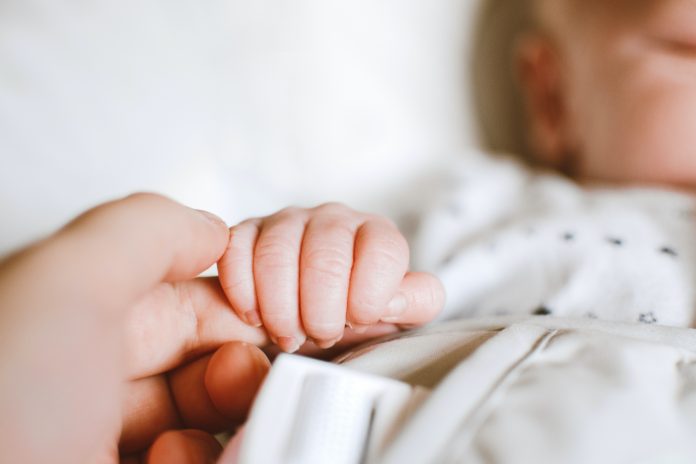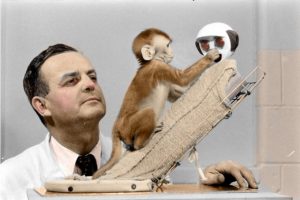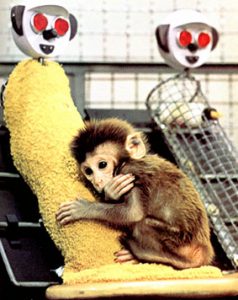Attachment refers to the strong and permanent emotional bond between two individuals. It is mostly used to describe the relationship between a child and a caregiver. Newborn babies can develop attachment not only with their mothers but also with other adults who meet their basic physiological and psychological needs (Ainsworth, 1973; Bowlby, 1969). Adults who meet these basic care and love needs of infants are called primary caregivers, and this term is frequently used in attachment theory. Therefore, the primary caregiver can be the child’s mother, father, grandmother, or any adult who takes care of the child’s needs (Goldberg, 1991). The child’s proximity-seeking behavior with the primary caregiver when he/she feels sad or in danger is one of the important steps of attachment between the child and the adult (Bowlby, 1969).
The first studies on attachment were carried by John Bowlby and his colleagues (Cassidy,1999). Working as a psychiatrist at a Child Guidance Clinic in London in the 1930s, Bowlby was involved in the treatment of many emotionally damaged children and had the chance to observe the impact of the relationship between the child and the mother on child development in many aspects. He realized the impact of the infant’s separation from the mother at an early age on the child’s later maladaptive behaviors. In his collaborative studies with James Robertson, Bowlby (Bowlby and Robertson, 1952) observed that when separated from their mothers, children experienced intense anxiety and this anxiety did not decrease even if their nutritional needs were met by other caregivers. These findings contrast with the dominant behavioral theory of attachment, which considers nutrition as the main reason for the child’s attachment to his mother (Dollard and Miller, 1950). As a result of these observations, Bowlby developed the origins of attachment theory (Bowlby, 1969).
Attachment is defined by Bowlby as a “lasting psychological connectedness between human beings” (Bowlby,1969). In the study of Bowlby, it is suggested that attachment also has an important place in an evolutionary context. According to the evolutionary theory of attachment, infants have basic needs such as nutrition, protection, and care to survive. When attachment develops and these needs are met by the caregiver, the infants’ chances of survival increase. Therefore, the bond established between the child and the mother is more significant than nutrition according to the evolutionary theory (Bowlby, 1958).
In the studies carried out by Bowlby, it has been suggested that infants will first develop a single primary attachment (monotropy) with primary caregiver, and this attachment will form a secure base for their exploration of the world and their future relationships. Therefore, the positive or negative effects on this basic attachment process also affect the future life of the infants. It was also highlighted that there is a critical period for the development of attachment and this period covers approximately the first five years. If an attachment is not developed between the child and the caregiver during this critical period, this will cause negative consequences on the child’s mental, psychological and social development (Bowlby, 1969).
Bowlby’s empirical work on attachment were influenced by many different studies. One of them was a series of studies carried by Harry Harlow (Harlow,1958; Harlow,1965) which examine the bonding processes of newborn rhesus monkeys with their mothers.
In the studies of Harlow, the bonding processes of newborn monkeys with their mothers were examined during the 1950s and 1960s. It was observed that infant monkeys depend on their mothers in many ways such as nutrition, protection, and care. For this reason, the basic function of this bond was investigated (Harlow and Zimmermann, 1958).
The main reason for attachment is explained as a nutrition in the behavioral theory of attachment, and it was suggested that the baby will establish a bond with the person who meets her/his nutritional needs (Dollard and Miller, 1950). Contrarily, in the studies of Harlow, it is suggested that infants have an innate need for emotional comfort, and they meet this need with touching and hugging. It is also suggested in the study that attachment is based on the “tactile comfort” that the child receives from the caregiver in line with this need (Harlow, 1958).
The studies of Harlow have been carried out in different forms. In one of these studies, newborn rhesus monkeys were isolated from birth. They were held for different periods, such as three months, six months, nine months, or a year, without any contact, either with each other or anyone else. After different periods of isolation, these monkeys were put back among the other monkeys and their attachment and adaptation behaviors were observed. After isolation, weird behaviors had been observed in monkeys. For instance, they were afraid of other monkeys, couldn’t communicate with them, and became aggressive. In addition, it was observed that they exhibited self-harming behaviors such as pulling their hair and biting their arms and legs as a result of their difficulty in the adaptation process (Harlow and Zimmermann, 1958).
According to the results of the research, it was observed that isolating the monkeys and preventing them to form attachments had a lasting effect on them. It was noticed that the duration of isolation played a decisive role in the size of this effect. In other words, monkeys isolated for 3 months were least affected compared to others, while monkeys isolated during one year were the group that experienced attachment difficulties most intensely (Harlow and Zimmermann, 1958).
In another study conducted by Harlow, infant monkeys were separated from their mothers after birth and placed in a cage. In these cages where the monkeys were placed one by one, there were two mother figures, one made of wire and the other covered with a soft towel. In the cages of four monkeys, there was the milk on the mother figure made of wire, while the milk was on the mother figure covered with a soft towel in the the other four monkeys’ cages. The study was continued for 165 days (Harlow. 1958)
As a result of the research, it was observed that the monkeys in both groups spent more time with the mother figure covered in a soft towel. The monkeys only went to the wire mother figure when they were hungry and went back to the mother figure covered with the soft towel again. It was also observed that when a frightening object was placed in the cage, infant monkeys tried to protect themselves and calm down by hugging the mother figure covered with a soft towel. These results support the evolutionary theory of attachment, which emphasizes the importance of security and caregiver sensitivity in the attachment (Harlow, 1958).
In these studies conducted by Harlow, it was concluded that in the critical period, which is the first month of their life, newborn monkeys need to bond with an object and hold on to it to maintain their normal development. In addition, it was observed that the newborn monkeys were emotionally damaged due to being away from the mother during the critical period and not being able to develop attachment. It was highlighted that this damage could be reversed when the monkeys developed attachment before the end of the critical period. However, when attachment could not be developed during and after the critical period, being in contact with mothers and peers afterward did not change this damage (Harlow,1958).
The studies and experiments conducted by Harlow have been ethically criticized. As a result of experiments to observe attachment behavior and the effects of deprivation, it was clear that the monkeys in the study were emotionally damaged. Also, it was observed that the female monkeys included in the experiment displayed harmful behaviors towards their offspring when they became parents. Besides these criticisms, Harlow’s studies had a valuable impact on issues such as attachment in newborns, the consequences of early separation from the mother, and the development of social behaviors. These findings supported Bowlby’s work and contributed significantly to the development of attachment theory.
In conclusion, considering the results obtained in many studies, it is clear that attachment theory has remarkable effects on the social, cognitive and emotional development of individuals. In addition, attachment theory offers important perspectives on the fundamentals and dynamics of close relationships (McLeod, 2009).
References
- Ainsworth, M. D. S. (1973). The development of infant-mother attachment. In B. Cardwell & H. Ricciuti (Eds.), Review of child development research (Vol. 3, pp. 1-94) Chicago: University of Chicago Press.
- Bowlby, J., and Robertson, J. (1952). A two-year-old goes to hospital. Proceedings of the Royal Society of Medicine, 46, 425–427.
- Bowlby, J. (1958). The nature of the childs tie to his mother. International Journal of Psychoanalysis, 39, 350-371.
- Bowlby J. (1969). Attachment. Attachment and loss: Vol. 1. Loss. New York: Basic Books
- Cassidy J (1999). “The Nature of a Child’s Ties”. in Cassidy J, Shaver PR. Handbook of Attachment: Theory, Research and Clinical Applications. New York: Guilford Press. pp. 3–20
- Dollard, J. & Miller, N.E. (1950). Personality and psychotherapy. New York: McGraw-Hill
- Goldberg, S. (1991). Recent Developments in Attachment Theory and Research. The Canadian Journal of Psychiatry, 36(6), 393–400. doi:10.1177/070674379103600603
- Harlow, H. F. & Zimmermann, R. R. (1958). The development of affective responsiveness in infant monkeys. Proceedings of the American Philosophical Society, 102,501 -509.
- Harlow HF. The nature of love. American Psychologist. 1958;13(12):673-685. doi:10.1037/h0047884
- Lorenz, K. (1935). Der Kumpan in der Umwelt des Vogels. Der Artgenosse als auslösendes Moment sozialer Verhaltensweisen. Journal für Ornithologie, 83, 137–215, 289–413.
- McLeod, S. A. (2009). Attachment Theory. Simply Psychology. www.simplypsychology.org/attachment.html







